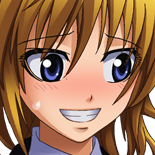Okay I promised some analysis of that music track, so here I go.
So first things first, the piece is written in C-minor, and the melody uses mostly long notes, both of which contribute to the general calm, yet mysterious, perhaps even dignified vibe this piece gives.
Now going into more detail, starting with the first 16 measures. Here, in the left hand the base tone of C is basically played the entire time, and the lower note of the two goes down one tone each 4 measures. Of note here is that in the final two measures (so 15 and 16) the upper of the two tones is one minor second lower, playing a B, which is not part of the C-minor scale, thus creating a sort of dissonance in the end. The melody in the right hand already starts giving a mysterious vibe by not quite reaching the higher C, but instead the highest tone only being a Bb. The most interesting part of this intro though are the bells. These follow the same melody as the right hand in the piano voice, however the bells don’t play on every note, and furthermore often only start a bit later. One thing to note about this is that especially in Japan the type of bell that is used here is often associated with the spiritual. So what I think is expressed through that is the otherwordly things, so Higanbana in this case, represented by the bells, seeping into the normal human world, represented by the piano.
Now in the next 16 measures, the piano plays the same thing as in the first 16, however the melody of the right hand is joined by a high-pitched voice probably created by a synthesizer, further cementing the otherwordly feel. Additionally, the violin starts playing in this part. The intervals between different notes of the melody are mostly seconds, with the occasional third or fourth, which are all intervals we are used to these days and which thus sound natural. One part that stands out in this segment is the Ab in the 28th measure. This is accomplished by not only having that note on the second beat but also by the interval with the preceding note being a minor seventh, an interval that is in general not used that often and especially stands out in this piece. This has the effect that the listener now pays a bigger attention, even if only subconciously, to the music, just mere moments before the piano voice changes considerably.
Which is what we come to now, in measures 33 to 48. The piano now no longer plays the melody it did in the first 32 measures but instead supports the main melody. While it is not immediately apparent by just looking at the notes, we can view the piano voice as playing chords, as the individual notes resound through one measure, so that for example in the 33rd measure G, C and D are eventually heard at the same time. So from here on out, I’ll view these as chords. In measures 33 to 36 the piano basically plays around the C-minor triad. This can be best seen in measure 34, where we have the three notes C, Eb, and G which make up the C-minor triad. The interesting thing here is, and this goes for every single chord in this piece, that the triads aren’t played in the typical order of C, then Eb, then G, but instead first giving the base tone C in the left hand, then playing a G, then playing the next higher C in the right hand, and finally ending with Eb. Basically, the normally highest tone of the triad is instead lowered by one octave and played first in the right hand. This is another small detail that probably causes us to perceive this piece as different and unusual. In the next four measures the piano is basically playing around a Bb-major triad. In measures 41 and 42 we basically have a Ab-major triad, and then going back to Bb-major, although this time the fifth is omitted and the fourth is played instead. In the final four measures of this segment we are back to C-minor again. What we see in this chord progression is that we first start with the same idea of starting with C and then going down one tone every four measures, however later on instead of going further down we go back up to C.
The melody in this part still uses mostly seonds, although it is in general higher than the melody in the previous segment. Again, near the end of this segment the listener’s attention is supposed to be more focused thanks to the high Bb in measure 47.
The melody from the right hand of the piano from the first two segments is still present though, as if you listen closely, you can still hear the synthesizer play that melody.
I think the change in the piano voice signifies that we have truly entered Higanbana’s world now, or that she has ours, however you want to look at it, and yet it seems to be a tragic or sad world, as we are still listening to a piece in minor.
The next segment, measures 49 to 64, are very interesting. Again, I’ll start with the chords throughout this segment. In the first four measures, we have a Eb-major triad. In the next four measures we then have a F-major triad. In the last 8 measures we then have a G-major triad, although the last four are one octave lower thane the first four. You might have noticed the word major here a lot. And it’s not only the word itself, with our first chord being Eb-major, we can show that we switched to the corresponding major scale to C-minor, which is Eb-major.
The melody itself still uses mostly seconds, however in combination with the chords it sounds more hopeful due to the change to major. The lowering by one octave of the chords in measures 61 to 64 gives a sense of closure, especially as the violin only holds out one note through this part. Overall, we can interpret this as while this appearance of Higanbana seems to be a mostly sad thing, there is still something hopeful about it.
After that, we only hear the melody we heard at the very beginning, but only through the synthesizer now and it furthermore gets less and less coherent. This can be interpreted as the spiritual influence being fleeting and disappearing again, which is backed up by all appearances of Higanbana, as she’s gone as quickly as she came.
I am curious if there is a second layer I could interpret this with once I know Higanbana’s character more. So I might come back to this piece at the end of Higanbana as a whole. Also I hope this wasn’t too boring, as I went at this from a more theoretical angle than is often seen around here.

 I’m sure they’re all lovely…
I’m sure they’re all lovely…





















